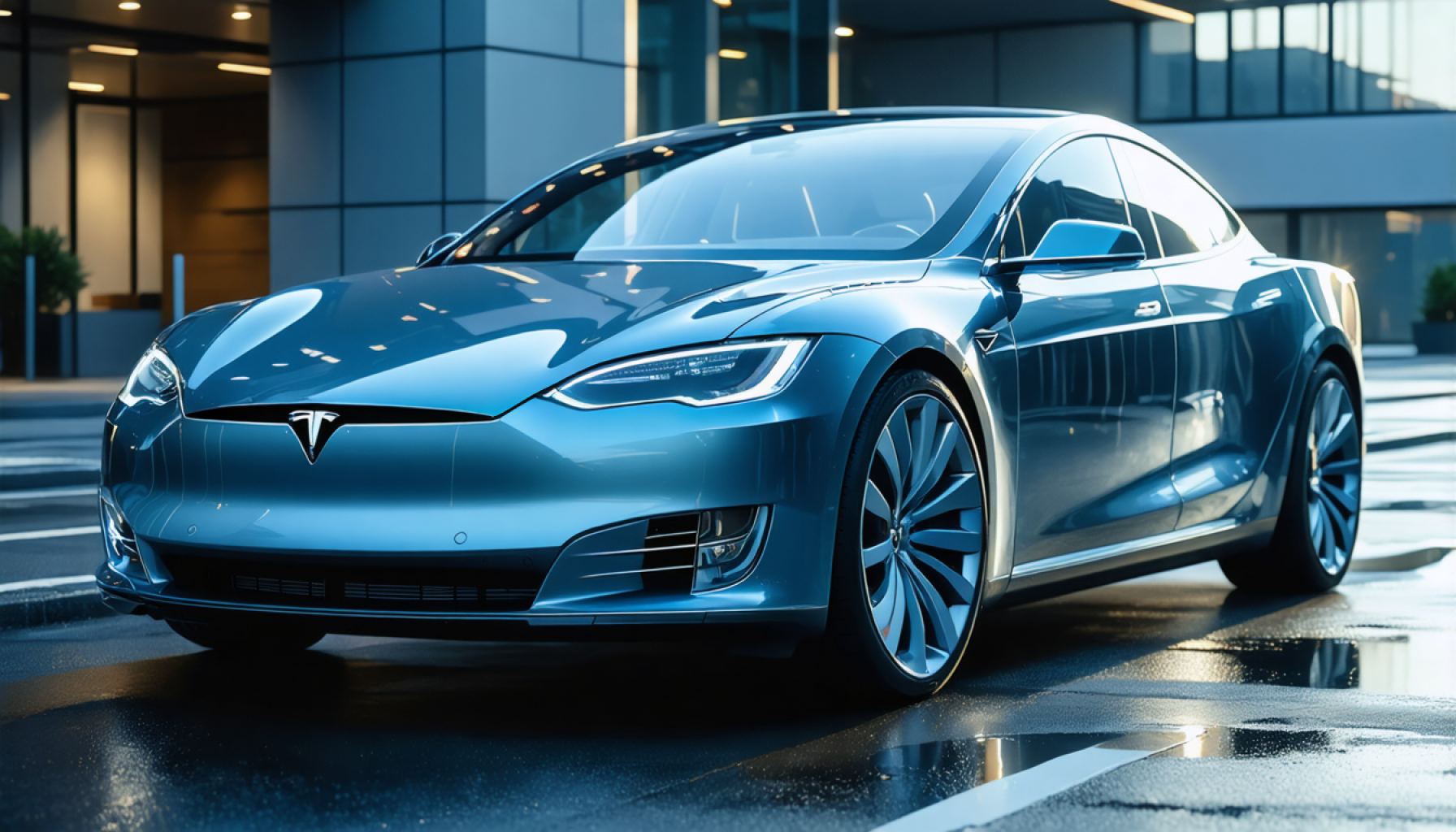- The electric vehicle (EV) market is experiencing rapid change, with Tesla and BYD at the forefront of competition.
- BYD, based in China, is gaining traction worldwide with strong sales and a diverse product lineup, challenging Tesla’s dominance.
- Tesla, under Elon Musk’s leadership, faces scrutiny and must continue to innovate to maintain its edge in design and technology.
- BYD focuses on practical, affordable models, appealing to a broad market and emphasizing value over luxury.
- The ongoing competition highlights the global shift toward sustainable and efficient transportation options.
- Consumer interest and passion for electric mobility are growing, spurred by accessible alternatives to traditional vehicles.
- This evolving landscape invites consumers and investors to be part of the electrification journey and the push for cleaner transportation.
The landscape of sustainable transportation is ablaze with change, where titans battle not with swords, but with bolts and kilowatts. Elon Musk, at the helm of Tesla, finds himself navigating turbulent waters as the company grapples with challenges to its reign. Meanwhile, across oceans, BYD rises, igniting discussions with its electric vehicle (EV) sales surging like wildfire.
In recent months, Tesla’s once-commanding lead in the global EV market has been shadowed by a formidable contender—BYD. Hailing from China, BYD has captured the attention of EV enthusiasts worldwide, with impressive sales figures that speak to a seismic shift in momentum. Their diverse lineup—ranging from compact sedans to robust SUVs—caters to a burgeoning market hungry for affordable and efficient alternatives to traditional gas-guzzlers.
With vibrant market dynamics playing out in real-time, Tesla faces scrutiny from shareholders and consumers alike. Although Elon Musk remains an undeniable force in the industry, whispers of dissatisfaction brew, compelling him to refocus and innovate to maintain Tesla’s cutting-edge appeal. Tesla’s cars have long been synonymous with sleek design and cutting-edge technology, yet the competition is neither static nor forgiving.
On the global stage, what BYD lacks in flash it compensates with strategy and persistence, silently amassing a loyal following and expanding their influence beyond the borders of China. By prioritizing practical models over luxury, BYD has strategically planted its flag in the vast and promising electric future, inviting consumers to rethink their definition of value.
For consumers and investors, this is more than just a competition between two giants; it’s an indicator of where the world is heading—toward cleaner, more efficient transportation. The takeaway is clear: the next chapter of electrification is being written now, with new players continually reshaping the narrative, offering choices that were mere dreams a decade ago.
As discussions on forums and YouTube channels flare, the passion for electric mobility grows. Whether you’re team Tesla or cheering for BYD, this electrifying saga beckons us all to watch, choose, and drive toward a more sustainable tomorrow.
Elon Musk vs. BYD: The Electrifying Race Toward Sustainable Transportation
The Rise of BYD in the Global EV Market
1. BYD’s Strategic Positioning: BYD, or “Build Your Dreams,” has positioned itself as a formidable competitor in the electric vehicle (EV) market by prioritizing affordability and practicality over luxury. Their strategy involves offering a diverse lineup of vehicles that include sedans, SUVs, and even commercial vehicles like buses and trucks, which cater to a wide array of consumers.
2. Battery Innovation: A key component of BYD’s success is its innovation in battery technology. BYD manufactures its own batteries and has developed the “Blade Battery,” known for its safety, longevity, and efficiency. This vertically integrated approach gives BYD a competitive edge by reducing dependency on external suppliers and controlling production costs.
3. Expansion Beyond China: While BYD began its journey in China, it has expanded its reach to global markets, including Europe, South America, and more recently, North America. This global expansion has helped BYD increase its market share and brand recognition worldwide.
Tesla’s Challenges and Innovations
1. Tesla’s Market Share: While Tesla remains a leader in the EV industry, its market share is experiencing pressure from competitors like BYD. Tesla is known for luxurious models such as the Model S, Model 3, and Model X, but faces the challenge of maintaining affordability alongside innovation.
2. Innovative Technologies: Tesla continues to lead with advanced technologies like Full Self-Driving (FSD) software and over-the-air updates. These features set Tesla apart, offering consumers a tech-centric experience that justifies higher price points.
3. Production and Supply Chain Issues: Tesla has faced supply chain challenges, which have sometimes led to delays in production and delivery. The company is investing in new Gigafactories around the world to mitigate these issues and meet rising demand.
Real-World Use Cases and Trends
1. Market Forecast: The global EV market is projected to continue growing, with the electrification of transportation seen as crucial for meeting international climate goals. According to the International Energy Agency (IEA), global EV stock surpassed 10 million in 2020, with continued exponential growth anticipated.
2. Sustainability: Both Tesla and BYD highlight sustainability in their business models, appealing to environmentally conscious consumers. Tesla places a strong emphasis on reducing carbon footprints, while BYD focuses on comprehensive sustainable transport solutions, including electric buses and trains.
Actionable Recommendations
1. For Consumers: When choosing between Tesla and BYD, consider factors beyond just price. Evaluate aspects such as battery range, after-sales service, local availability, and the company’s approach to sustainability.
2. For Investors: Keep an eye on production capacity, technological advancements, and market expansion. Both companies show potential, but it’s essential to stay informed on their operations and market strategies for sound investment decisions.
3. Quick Tips: If you’re considering an EV purchase, test-drive multiple models to find the best fit. Look for government incentives that might make purchasing an EV more affordable.
For more insights into the ever-evolving world of electric vehicles, visit the official sites of Tesla and BYD to explore their latest offerings and innovations.
This burst of innovation in electric mobility showcases a promising shift towards more sustainable transportation, enabling consumers to contribute positively towards the planet while enjoying the benefits of cutting-edge technology.
